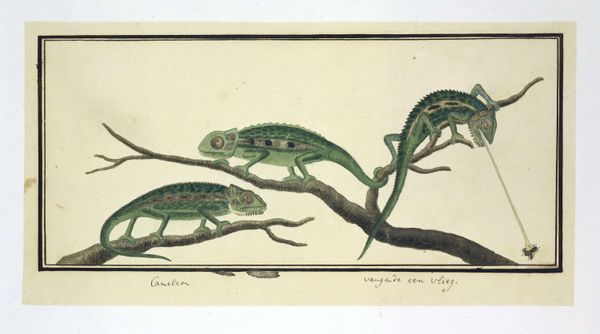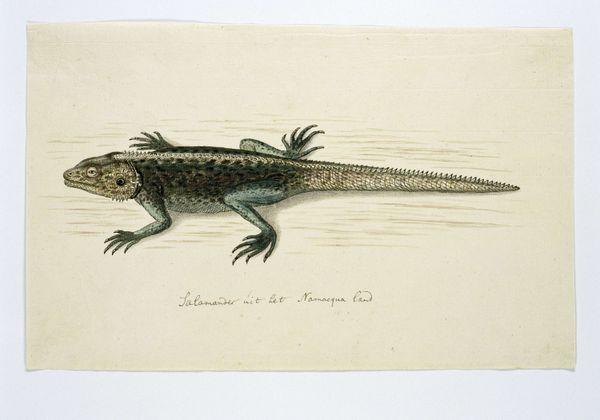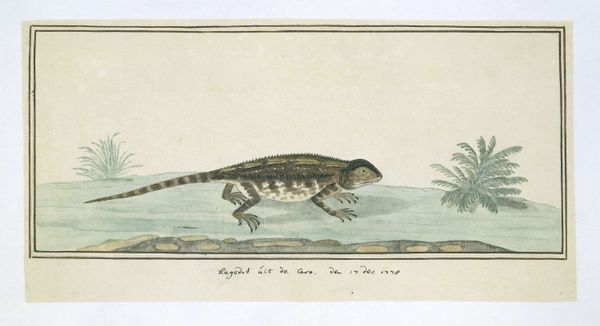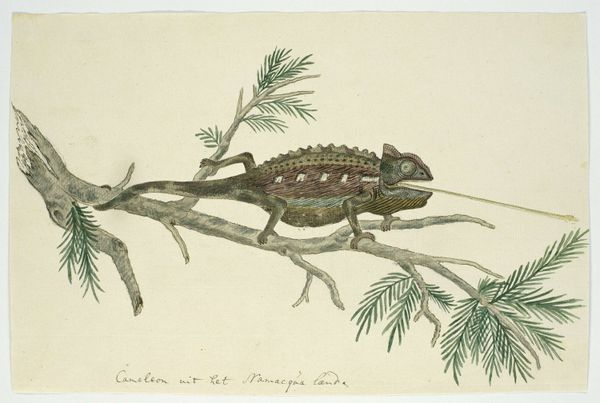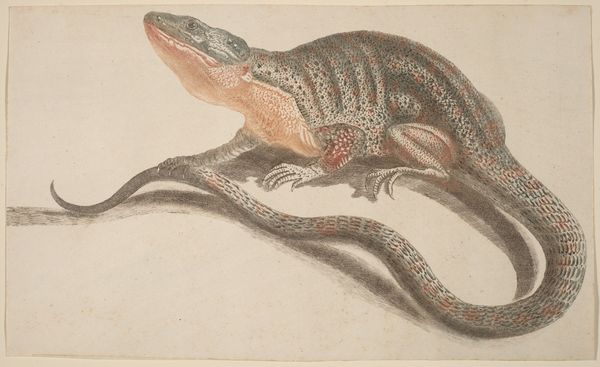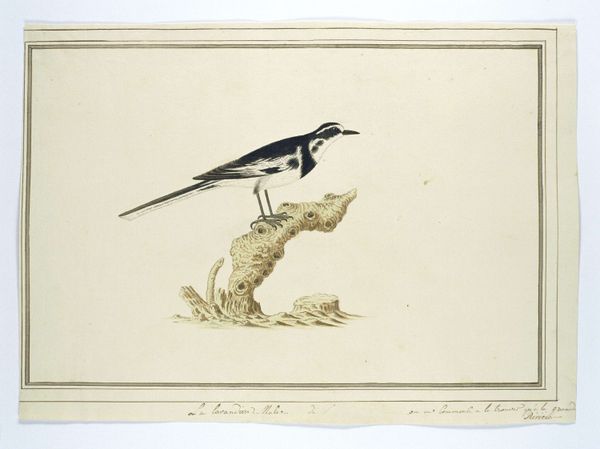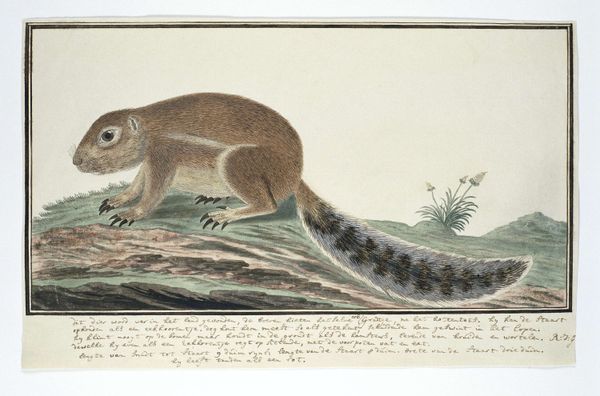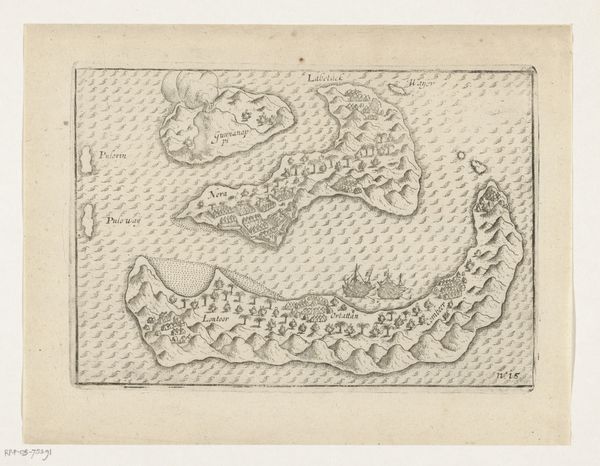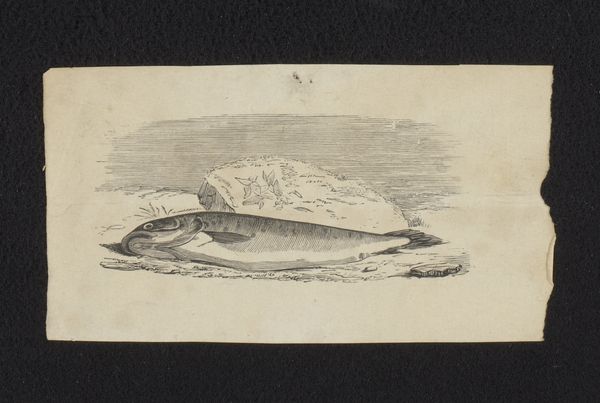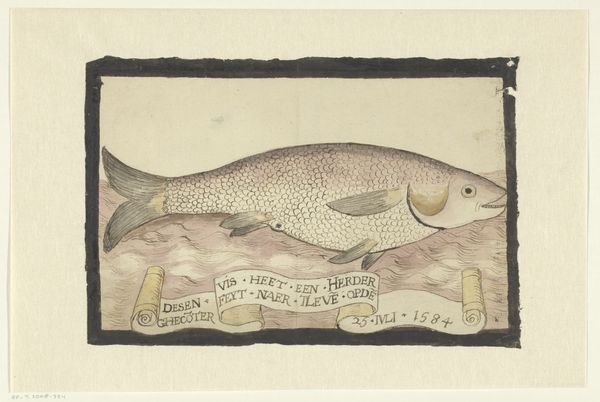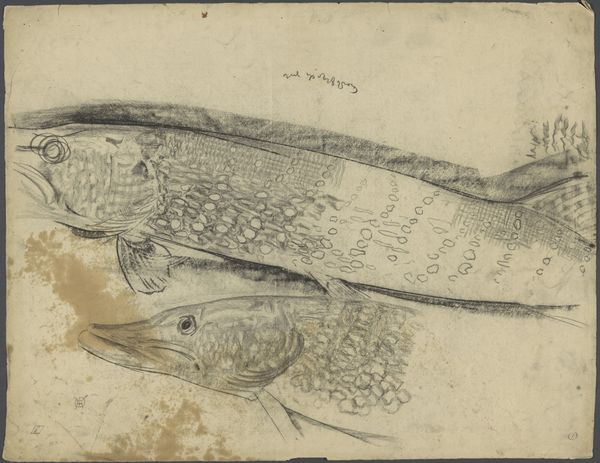
drawing, watercolor
#
portrait
#
drawing
#
landscape
#
figuration
#
watercolor
#
watercolour illustration
#
academic-art
#
naturalism
#
watercolor
Dimensions: height 660 mm, width 480 mm, height 171 mm, width 293 mm, height 138 mm, width 293 mm
Copyright: Rijks Museum: Open Domain
Curator: Isn't that charming? This is Robert Jacob Gordon's "Bradypodion pumilum," or Cape dwarf chameleon, a watercolor and ink drawing possibly created between 1777 and 1786. Editor: It’s such a muted piece; almost dreamlike. The colors are faded, the chameleon looks like he's barely clinging to that branch… Is it meant to be melancholy? Curator: I think it's more observational than emotive. Gordon was a military man and explorer, after all. Think of him carefully rendering this little creature, part of documenting the natural world in South Africa. Consider the paper itself—likely handmade, its texture influencing the way the watercolor bleeds and settles. Editor: Bleeds is right. The way the ink defines the chameleon’s scales – those precise little marks – is offset by the looseness of the watercolor. It’s as if two different approaches to art-making are in conflict. Did Gordon mix his own pigments, do you suppose? Imagine the labor of grinding those materials. Curator: Absolutely, the act of creation itself becomes a part of the piece. He probably foraged many elements locally. And look at how the chameleon blends into the surrounding foliage! Editor: It’s a practical detail; you’d want your colors to be true if you're documenting species in new territories. Was the illustration ever printed? That context would surely influence how he chose and mixed his inks. Curator: To see this as just documentation, though, overlooks the artistry! Notice the subtle gradations of green, the delicate rendering of light on its skin, and even the gentle curve of the chameleon's tail mimicking the branch below. Editor: Oh, I don’t discount the artistry! But I am very interested in how it traveled from the artist's hand to a broader public, and that certainly changes my view. Curator: Yes, art is about so much more than aesthetics; this work encapsulates scientific exploration, personal artistry, and an historical moment caught in delicate strokes of pigment. Editor: Indeed. A fleeting glimpse into a vanished world seen through the lens of craft and a specific time of production.
Comments
No comments
Be the first to comment and join the conversation on the ultimate creative platform.
